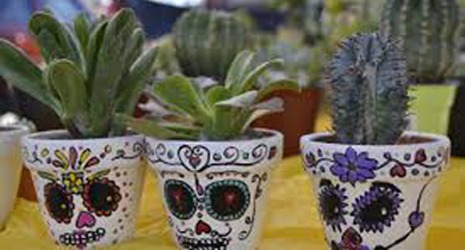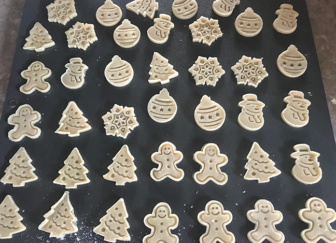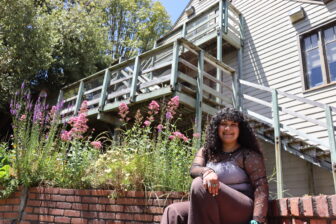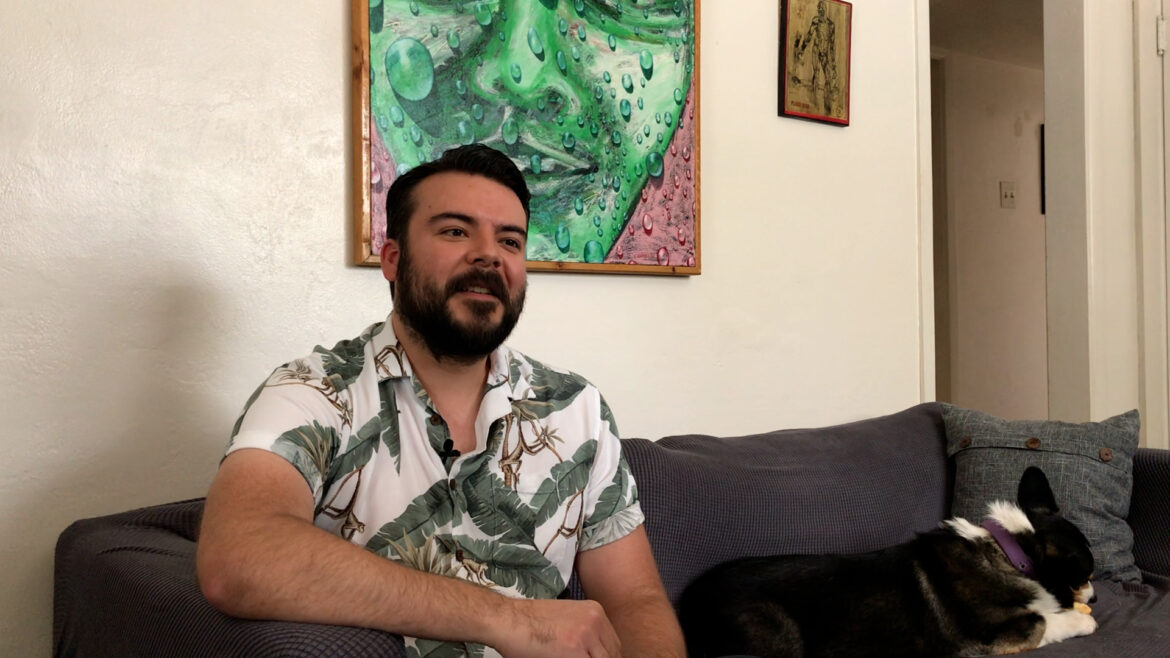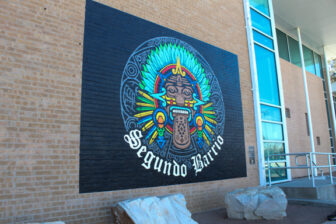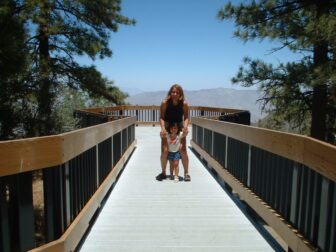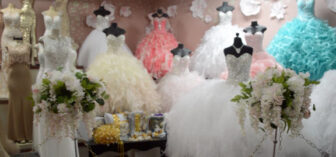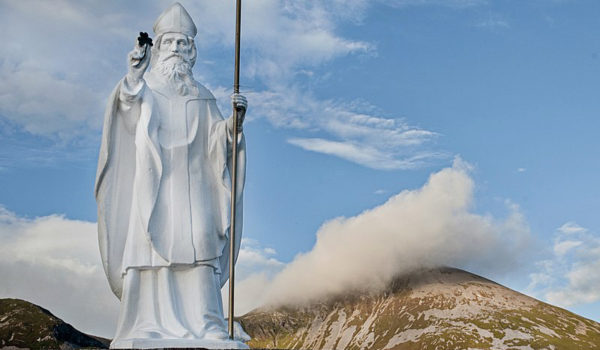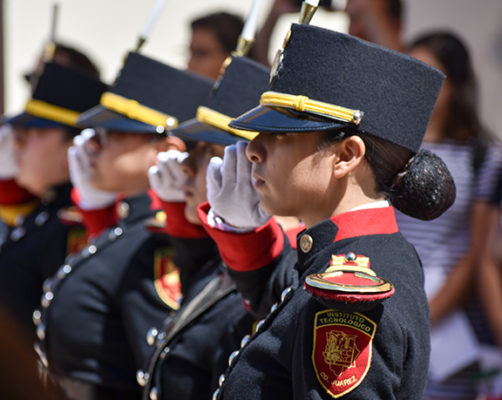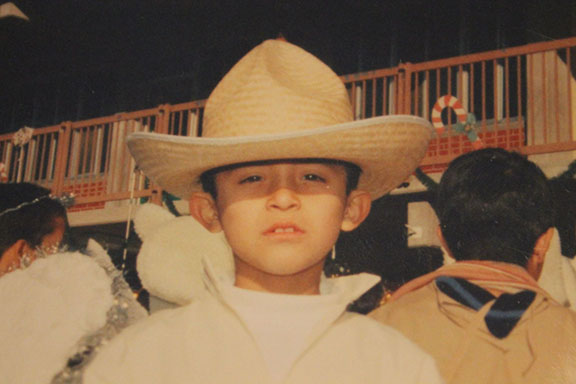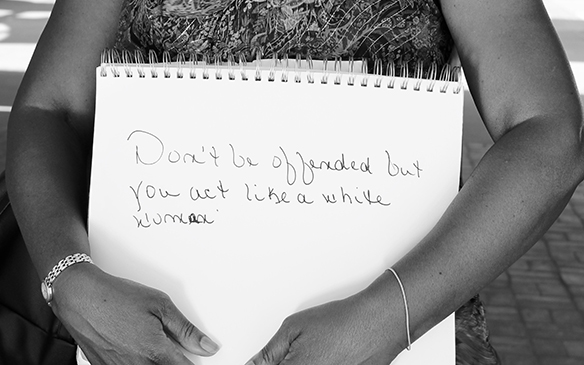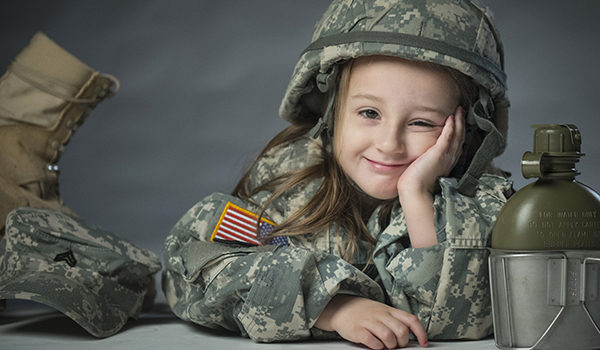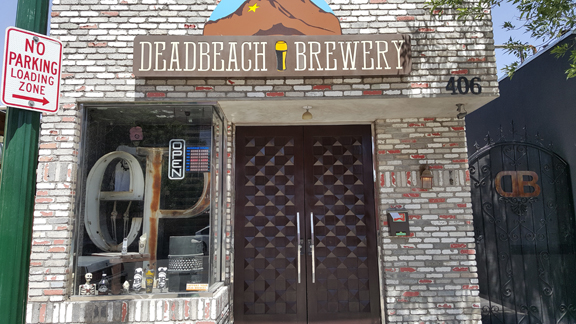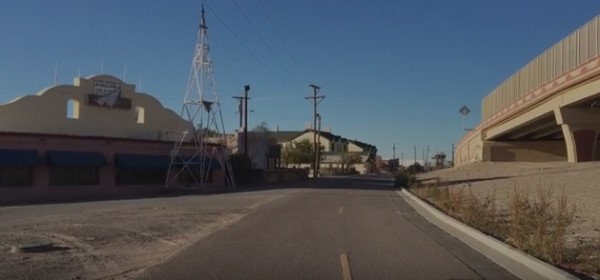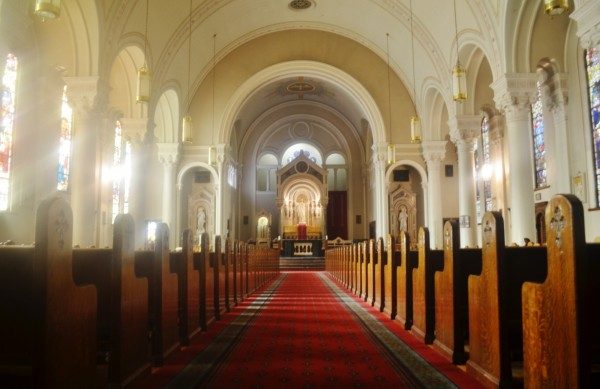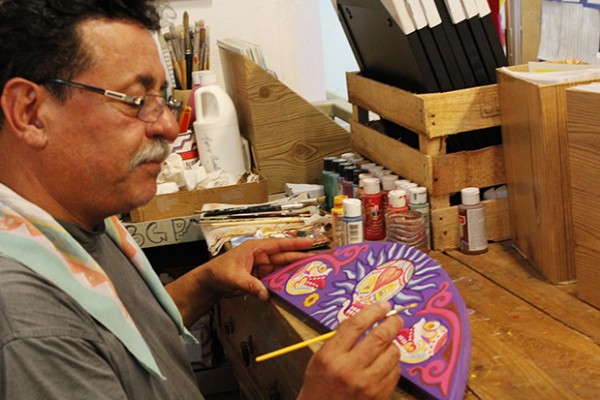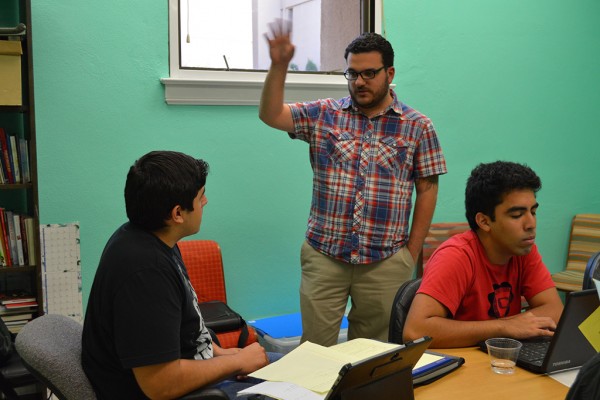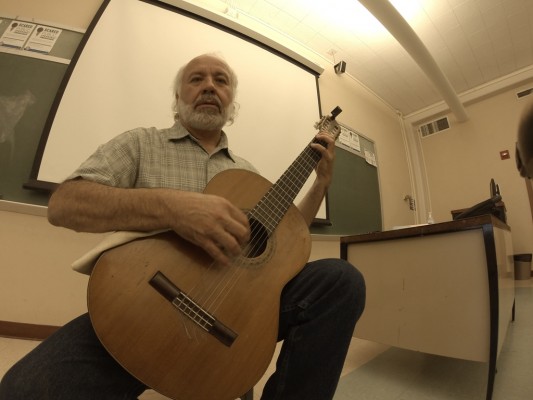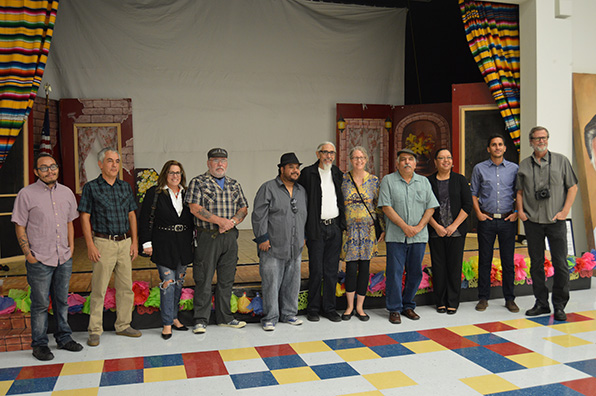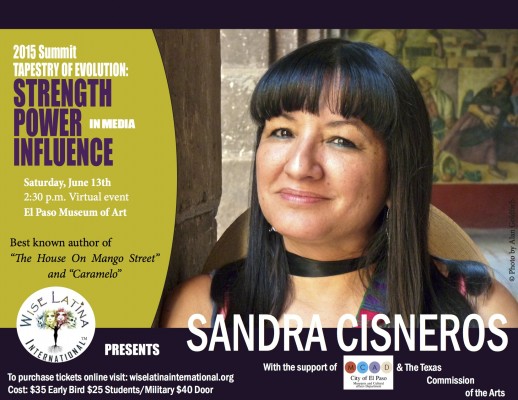As a Mexican-American who celebrates Día de los Muertos, or the Day of the Dead, at the end of October and beginning of November, I’ve noted an increasing concern the past several years that the holiday is becoming more commercialized.
The newcomers guide to a borderland Christmas
|
Holidays around the country are celebrated with unique traditions, special to their region. And the holidays in the borderland also have their own festive recipe. Sharing a border with Mexico, El Paso is a melting pot of cultura with a dash of America and a dash of Mexico.In a city where the population is predominantly Mexican-American, the spices of two different cultures make the borderland holidays a celebration like no other. If you are new to El Paso, here’s all you need to know to celebrate borderland style. The Holiday prep
The festivities of the holiday season kick off early in the borderland.
Photojournalist has unique view of border life as a non-Spanish-speaking child of immigrants
|
Briana Sanchez frowns at the images on her computer screen.
“I need to add some happier photos in here,” she says. Sanchez, lead photojournalist at the El Paso Times, knows better than anyone the difficult times that the border has been through in the last two years. After spending eight years away, first in college in Georgia and Arizona and then working at newspapers in the Midwest, Sanchez returned home to El Paso in the spring of 2019.
“As soon as I moved back here, we had those patriots at the border, protecting the border on their own volition,” she says. “And then we had the ‘We Build the Wall’ people. And then we had the mass shooting.
Daughter of Salvadoran immigrants cultivates inclusive space in rural white community
|
As the oldest daughter of immigrants from El Salvador, Karina Ramos-Villalobos’ job as a child was to translate and guide her parents through the language barrier they faced in their adopted country.
Photojournalist has unique view of border life as a non-Spanish-speaking child of immigrants
|
Briana Sanchez frowns at the images on her computer screen.
“I need to add some happier photos in here,” she says. Sanchez, lead photojournalist at the El Paso Times, knows better than anyone the difficult times that the border has been through in the last two years. After spending eight years away, first in college in Georgia and Arizona and then working at newspapers in the Midwest, Sanchez returned home to El Paso in the spring of 2019.
“As soon as I moved back here, we had those patriots at the border, protecting the border on their own volition,” she says. “And then we had the ‘We Build the Wall’ people. And then we had the mass shooting.
From borderlands of Brownsville and Tucson, Chicanx artist explores themes of barriers, belonging
|
Artist Alejandro Macias was born, raised and lived for more than three decades in Brownsville, Texas, communicating the borderlands experience through visual art as a second-generation Mexican American.
In 2019, he moved hundreds of miles west to the borderlands city, Tucson, in Arizona, to continue working on his art and to teach at The University of Arizona in the School of Art. His work, which in part is inspired by Chicanx activist work, draws on artists who transformed the human figure, artistically. His art reflects his and others’ lived experience, striving to find a sense of belonging in the borderlands region. His work also reflects social-political climates of the times.
Macias’ paintings focus on identity, the Mexican American experience within U.S. society, migration, his own family history and the many other families struggling and who have witnessed barriers in the borderlands. He uses images of himself in some work as representative of others with visuals often related to physical and metaphorical barriers in the Mexico-U.S. borderland region, which embodies two nations, two cultures with different identities that often merge together.
How police work for women in El Paso has changed over the years, but still has a ways to go in recruiting
|
The history of women on El Paso’s police force dates back to 1913, but much has changed over the years. “Women were seen more as social workers than police officers because it was a very male-dominated occupation,” said Egbert Zavala, an associate professor in the Criminal Justice Department at the University of Texas at El Paso. Early police work by women mostly involved looking for runaway girls, making calls on community residents, patrolling the streets and arresting prostitutes. “There was this idea, back in the day, that males had to deal with dangerous criminals,” Zavala said. https://youtu.be/EOnjuEVQzH4
According to records with the El Paso County Historical Society, the first policewomen in El Paso appointed in 1913 were Mrs. C.A. Hooper, Mrs. L.P. Jones, and Juliet Barlow.
Artists reflect Segundo Barrio pride in south El Paso mural
|
EL PASO — Three artists who grew up in the Segundo Barrio collaborated to create the mural “Quinto Sol- The Rebirth,” in south El Paso. Francisco Delgado, Francisco Camacho, and Bobby Lerma united to paint the mural to inspire children from the neighborhood with memorable artwork. “I believe that it was destined to be on that wall. Everything felt in the right place, at the right time, with the right people, with people who have a good heart, with people that care about the community, and with people who have a strong incomparable love to the neighborhood,” Lerma said. Delgado calls himself a “bordeño,” an artist whose artwork is a mashup of being a Chicano and a “fronterizo.”
Hispanic, Latino … a single word is too small to capture who we are
|
In the leadup to the Nov. 3 election and in its aftermath, there’s been a lot of talk about how Latinos aren’t a monolith, and the messiness of trying to lump so many different people into one group. It’s also something Brandy Ruiz has been thinking about. She’s a journalism student at the University of Texas at El Paso. What, she wondered, does it even mean to be Latino or Hispanic?
Culture Shift: Looking at Identity in the Borderland Bubble
|
In this episode of Our Border Life we talk about those moments when people realize they’re in a culture shift – that something fundamentally has changed about their identity. Specifically, the growing awareness of the multi-layered identities among people living in the U.S-Mexico borderland region of El Paso and Ciudad Juarez. https://soundcloud.com/borderzine-reporting-across-fronteras/looking-at-identity-through-the-borderland-bubble
We meet with Gustavo Reveles, who was born in El Paso and spent the first 15 years of his life living on both sides of the border. In a conversation with a friend, Martin Bartlett, Reveles talks about how he didn’t realize he lived in a culture bubble until he moved away for a job after college.
“You grew up thinking you’re both Mexican and American.
New Latinx generation embraces the code-switching identity once derided as ‘pocho’
|
EL PASO –For some young borderlanders, pocho is a word that unites two cultures. “El Paso and Juarez is its own culture. We are neither entirely American and we are neither entirely Mexican so pochismo would be somewhat some of our language,” said Antonio Villaseñor, 23, a University of Texas graduate student and editor of the online magazine Con Safos. With outlets like Buzzfeed and we are mitú featuring videos on Youtube describing the experience of being a pocho in the United States and new clothing lines like the L.A-based Pocho wear, the term is being embraced by a new generation of Mexican-Americans. “I see it as something positive.
Sports mascots spark vehement arguments on both sides
|
The appropriation of Native American symbols as sports mascots is a divisive topic as sports fans enthusiastically support their teams, and others want the mascots replaced, a scholar on the topic said recently. For example, some Cleveland Indians fans embrace Chief Wahoo, the team’s mascot, and fight vehemently to keep their beloved emblem, said Wayne State University Associate Professor Kelly Young said during a recent presentation. Young emphasized his love for sports and how his time in Cleveland helped add to his research. “When I was there it was sort of the ground zero of anti-Chief Wahoo protest going on there,” Young said. For rabid fans, such symbols, are not seen as racist but as symbols of remembrances when they went to games with loved ones.
Lost in Translation: How Irish-Americans transformed the sacred legacy of St. Patrick’s Day into a drinking festival
|
James Farrelly, University of Dayton
In 1997, my students and I traveled to Croagh Patrick, a mountain in County Mayo, as part of a study abroad program course on Irish literature I was teaching for the University of Dayton. I wanted my students to visit the place where, each July, thousands of pilgrims pay homage to St. Patrick, who, according to lore, fasted and prayed on the summit for 40 days. While there, our tour guide relayed the story of how St. Patrick, as he lay on his death bed on March 17 in A.D. 461, supposedly asked those gathered around him to toast his heavenly journey with a “wee drop of whiskey” to ease their pain.
Es importante reconocer la diversidad entre identidades Latinas cuando se celebra la herencia hispana
|
Existen diferentes términos que identifican a la comunidad hispana aquí en los Estados Unidos, términos que dictan un margen entre personas de diferentes ascendencias. El hecho de que se conmemora la herencia hispana hace que salgan a flote todas esas identidades. Expertos en el tema interpretan que hace falta un sentido de unidad entre la comunidad hispana en este país, ya que no se sostienen precisamente las mejores relaciones entre ellas.
“Yo creo que nos falta mucha unidad….Existen relaciones como de amor/odio entre los mexicanos y mexicoamericanos, en este caso. Lo mismo sucede con mexicanos y puertorriqueños, colombianos y salvadoreños, con toda esta gama de latinoamericanos que habitamos en este país”, dijo María Socorro Tabuenca, profesora de español y de estudios chicanos en la Universidad de Texas en El Paso.
What is life really like in a Texas border city?
|
Life in a border city can be like a relationship status on social media. It’s complicated. More than 1 million people live in the El Paso-southern New Mexico region. Another 1.3 million live across the border in Juarez, Mexico. We are separated by an international boundary set along the path of a formerly meandering river.
Mexicano, Chicano, or Pocho. Who am I?
|
I didn’t start to question my identity until my first year of college. Before that I thought I was an American citizen attending kindergarten in Ciudad Juarez. Then in third grade I realized that I was Mexican when I crossed the border to attend Houston Elementary School in El Paso. The first day of school a classmate asked me in Spanish – not English – why I was wearing black polished shoes. I remember I looked around and saw that all the other boys and girls were wearing sporty tennis shoes.
How a foreign student taught me not to feel like an outsider in my own city
|
I don’t consider myself a social person, especially while I’m in college. I get too focused on school work, and usually meet new people if they are the first ones to come up and talk to me. I was also was self-conscious about people judging me for my English skills. Even though I was born in El Paso, I lived in Juarez, Mexico until fifth grade. And like a lot of others who live on the border, I sometimes felt like I was in an awkward limbo between cultures.
Austin High School to restore, save its history through alumni and student efforts
|
When Chris Steven entered the halls of the Austin High School as a student in 2008, little did he know that in his heart he would never leave. “I grew up around Austin. It’s my second home. A lot of my early memories were of going to the football games. I just remember how happy I was to come to Austin and I get excited to see all these people very prideful chanting and cheering for the football teams and singing the (Austin) fight song.
Children find home on the road as they follow parents in military moves
|
Bilanki Andang seems like any other student at the University of Texas at El Paso. He stays home and watches TV shows on Netflix on weekends and enjoys the same things many other millennials like. However, his childhood was far from traditional. His father, Staff Sgt. Theophilus Andang, worked in the Army for 15 years as an S1 before he decided to retire in El Paso.
Latino entrepreneurs make their mark through microbrewing
|
El Paso, TX – Carlos Guzmán opened his first bar while he was stationed in Iraq. Well, it was sort of a bar. And it sort of just happened. Guzmán was having a hard time buying liquor in Iraq, so he asked his friends and family to stash some little bottles in their care packages. “Little did I know that within a month we’d have over 50 bottles,” said Guzmán who was in the U.S. Army.
El Paso’s forgotten historical sites gather dust on the border
|
Weeds grow high around the empty buildings on the land where many say El Paso got its start. The spot where Don Juan de Oñate is believed to have led a Spanish expedition in 1598 after discovering the Pass to the North is marked by little more than an abandoned fountain. Generations later in 1850, El Paso pioneer Simeon Hart established Hart’s Mill in the same area of Paisano Drive on the edge of the Rio Grande. Now there is just La Hacienda, a restaurant that closed down decades ago. The officers quarters from Old Fort Bliss, built between 1873 and 1893 still stand nearby – also empty and forgotten.
Fading faith challenges relationships in predominantly Catholic community
|
Sarahi Moyers remembers the day she told her mother she did not believe in God. She was a nervous 13-year old, who was about to feel slightly guilty, and at the same time very liberated by what she was going to say. “I don’t believe in God,” Moyers said. Her mother, Luz Ofelia Burundi – a devout Catholic – was devastated. Another child damned, another child she would have to repent for, another child that lost their way.
Non-Catholics share views about pope’s border visit
|
EL PASO — In a region where the majority of the population is Catholic, news of Pope Francis’ visit to Cd. Juarez on Wednesday has brought a lot of excitement since it was announced back in December. But among non-Catholics it is still just Wednesday. Jehovah Witnesses Claudia A. Bernal and her mother, also named Claudia, said they don’t have plans to follow any of the pope-related events since they don’t share the same beliefs, but they also don’t feel any opposition to the celebration. “We are respectful about the pope’s visit,” said the elder Claudia Bernal.
Disminuye el número de católicos en Cd. Juárez
|
CD. JUAREZ — Pese a que la religión católica sigue siendo la que más se profesa aquí, el número de católicos ha disminuido considerablemente en los últimos años. Esta ciudad fronteriza cuenta con una población de 1.3 millones y el 69 por ciento se consideran católicos, pero de acuerdo con el Instituto Nacional de Estadística Geográfica e Informática (INEGI), la religión católica ha decaído en Juárez. Hace apenas 10 años, un 82 por ciento de la población profesaba ser católica. Según María Olivares quien lleva abrazando la religión católica desde hace 50 años, esto se debe a los escándalos por los cuales ha pasado la iglesia católica.
Life of activism shines through in Mexican-American artist’s colorful works
|
Born and raised in El Paso, Texas, Arturo Avalos grew up in area of town known as Segundo Barrio, one of the oldest immigrant neighborhoods in the city. As a first generation Mexican American, Avalos said the discrimination he experienced as a child growing up has had a deep impact on his art and life. In elementary school he discovered his passion for drawing and was often scolded by teachers to complete his classwork instead of doodling. At the age of 12 he became a young activist after the mostly Mexican-American workers at Farah, a garment manufacturing company where his sister and neighbors worked, went on strike because of low wages, no medical benefits, work quotas and better working conditions at the company. “I volunteered and did what they needed, handing out flyers, explaining our position,” said Avalos.
‘Romeo and Julieta’ opens door to future bilingual productions in the borderlands
|
For bilingual, bicultural border cities like El Paso, Texas and Ciudad Juarez, Chihuahua, the story of two lovers whose miscommunication leads to their tragic death does not sound far fetched. Although Shakespeare’s plays were originally written in English, many, like Romeo and Juliet and Othello, have been performed all over the world in bilingual fashion to attract a broader audience. For this year’s 27th season of the local acting company, “Shakespeare on the Rocks,” Artistic Director Hector Serrano directed for the second time a bilingual version of Romeo and Juliet at the binational Chamizal National Park near downtown El Paso. The bilingual Romeo and Julieta play embodies the mission of The Chamizal, which commemorates the diplomatic negotiation between the United States and Mexico through the Chamizal Treaty. This new treaty, which ended a border dispute over land in 1848 when the Treaty of Guadalupe Hidalgo established the Río Grande River as the international boundary, negotiated the borderline because the river had naturally moved leaving Mexico with less land than was originally granted in the 1848 Treaty.
U.S. speech and debate teams dig deep for material to overcome literary void of Latino voices
|
EL PASO — For a while now, UTEP’s Speech and Debate team has faced a lack of literary diversity and its inaccessibility for use in competitive speeches and interpretive events. With a minimal amount of dramatic literature that focuses on people of color, specifically Hispanics, the team has had to deal with a deficiency of available texts by and about people of color for student speeches and competitions. Despite the lack of diverse materials, the University of Texas at El Paso team has traveled the nation for forensic competitions from Portland, Oregon, to Gainesville, Florida, presenting speeches on a variety of topics important to college students: from new medical technologies, race, LGBTQ and identity issues, among many others. In its more than 30 year history, the UTEP team has won hundreds of speech awards nationwide. “The first thing that we really start with is figuring out an event and a topic,” said Carlos Tarin, associate director of the Speech and Debate program in the Department of Communication.
Professor credits love of music for shaping his life
|
The screams of teenage girls filled the air during the Ed Sullivan Show on the cold winter February day in 1964. John Sequeiros, age 10, remembers sitting three feet away from his black and white television, his eyes glued to the screen as four young British musicians made history. His fingers start to twitch as he follows every note he hears. Within moments, he knows exactly why he was put on this earth. “When I saw The Beatles play on The Ed Sullivan Show, I was mesmerized by the guitar players,” said Siqueiros.
Chicano Heritage Month exhibit: Visual Stills Along La Frontera
|
EL PASO — In one photograph an old baby doll lays crippled on the harsh gray street, one eye-socket empty, one leg missing. In another photo a shoeshine man works fevershly on a cowboy’s boots. The reality of border life seen through the lenses of 12 El Paso area photographers is on exhibit at Fotos Septiembre: Through the Eyes of Borderland Photographers (originally titled Foto Septiembre – Visual Stills Along La Frontera) through October 23 at the La Fe Culture and Technology Center’s Galería Aztlan. All the works show and represent Chicano heritage. This is the exhibition’s second year showcasing professional and amateur photographers.
Tiguas determined not to lose their culture
|
Once a year during the outdoor Dia de San Antonio fest on June 13, at the Tigua tribe’s Ysleta del Sur Pueblo, dozens of women and men don colorful costumes, a red sash around their waist, brown moccasins and headbands to celebrate their culture through authentic Native American dance and food. From sunup to sundown, the dancers perform ritual dances outside the Tigua Cultural Center, 305 Yaya Lane. Hundreds of people, both Indian and non-Indian, watch the dancers and taste traditional food like meatballs, chile colorado, sopa de pan or bread soup, and albondigas, meatballs. The traditional celebration is one of several indigenous holidays during the year that the 8,000-plus-member tribe organizes to teach their children Tigua history and culture and keep the old traditions alive. In addition to the most sacred feast of Dia de San Antonio, the tribe also opens up the reservation to the public for: Dia de San Juan, June 24; Dia de San Pedro y Pablo, June 29; Dia de Santa Kateri Tekakwitha, July 14; Dia de Santiago, July 25; Dia De Santa Ana, July 26; and Pueblo Reunion Day, October 12.
Wise Latina summit empowers local Latinas through multiple events this weekend; Conference kicks off with dire salary stats for El Paso Hispanic women
|
A weekend long series of women-focused writing workshops, art events, films and prominent local and national Latina speakers, kicks into gear today and tomorrow in the Downtown Art District and El Paso Museum of Art. Organized by the national non profit group Wise Latina International, the two-day summit kicked off earlier this week with an eye-popping study that found El Paso area Latinas earn between 44 to 47 cent on the dollar or 30 cents less than what white women earn nationally and 10 cents less than Latinas earn nationally. The study was done in conjunction with the group MerKadoTeknia Research and Consulting with participation by faculty from UTEP and Texas A&M AgriLife Extension. The study also notes that the female poverty rate in Texas is higher than it is for the entire state of Texas and that 71 percent of jobs in El Paso pay less than $36,000 per year, “which cannot sustain a single mom with one child,” according to a press release. Wise Latina Founder and President Liz Chavez said the purpose of the study and summit, which focuses this year on the theme of “strength, power and influence in media,” is to “educate, raise awareness and empower our women.” The organization, she said, seeks to “promote and encourage economic, educational, health and socio/political emplowerment for the betterment of Latinas, women, family and community by utilizing and developing leaders while encouraging professional and personal development.”
In addition to events geared toward young Latinas, the summit includes writing workshops by local Latina authors Josefina Lopez, Maria M. Maloney and Denise Chavez.
